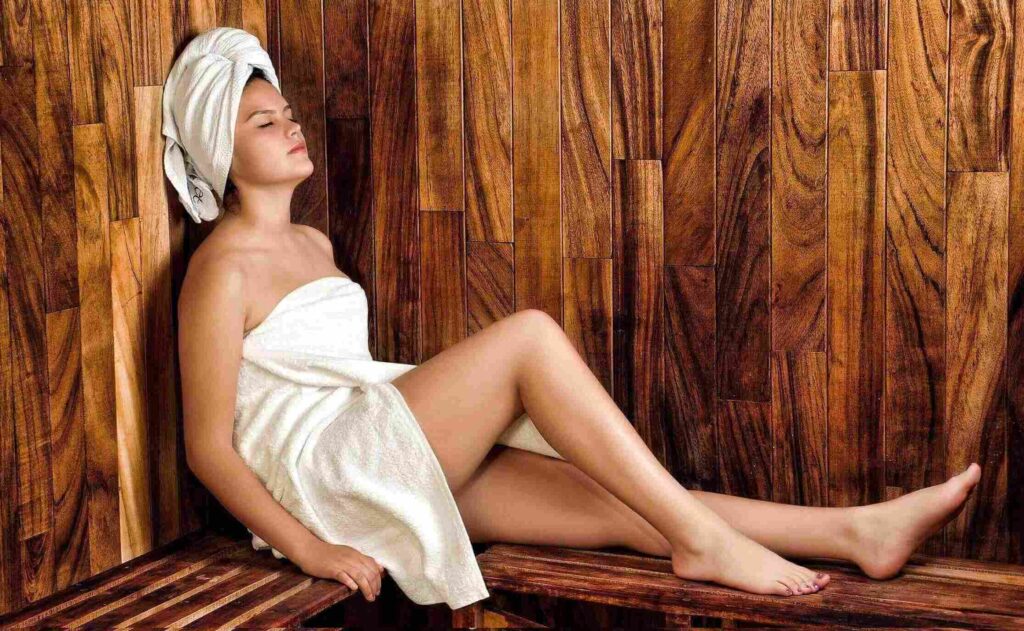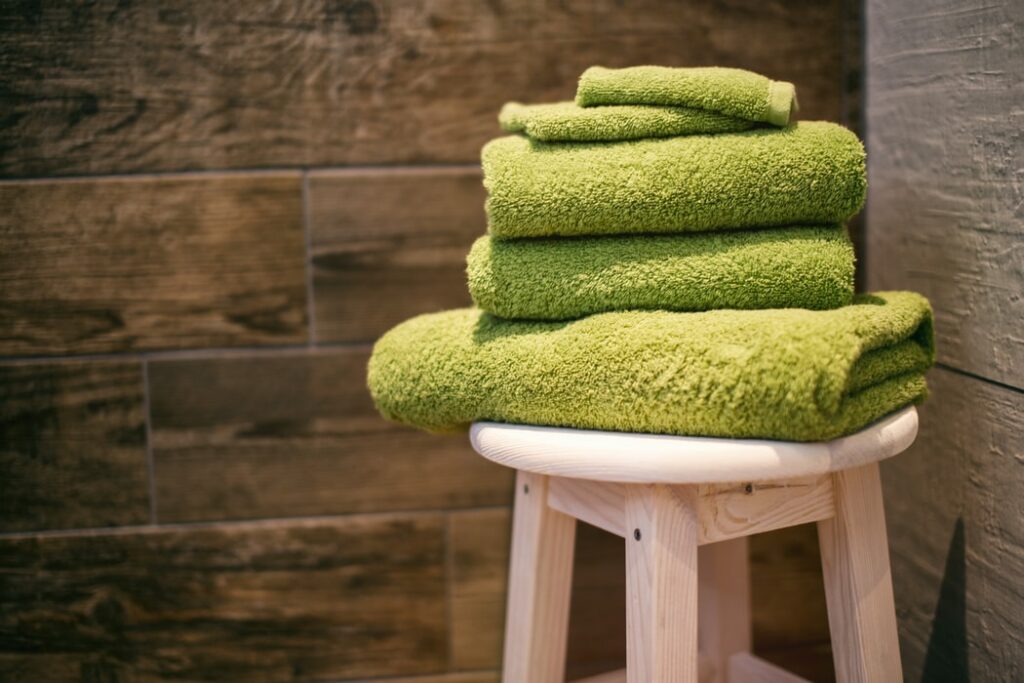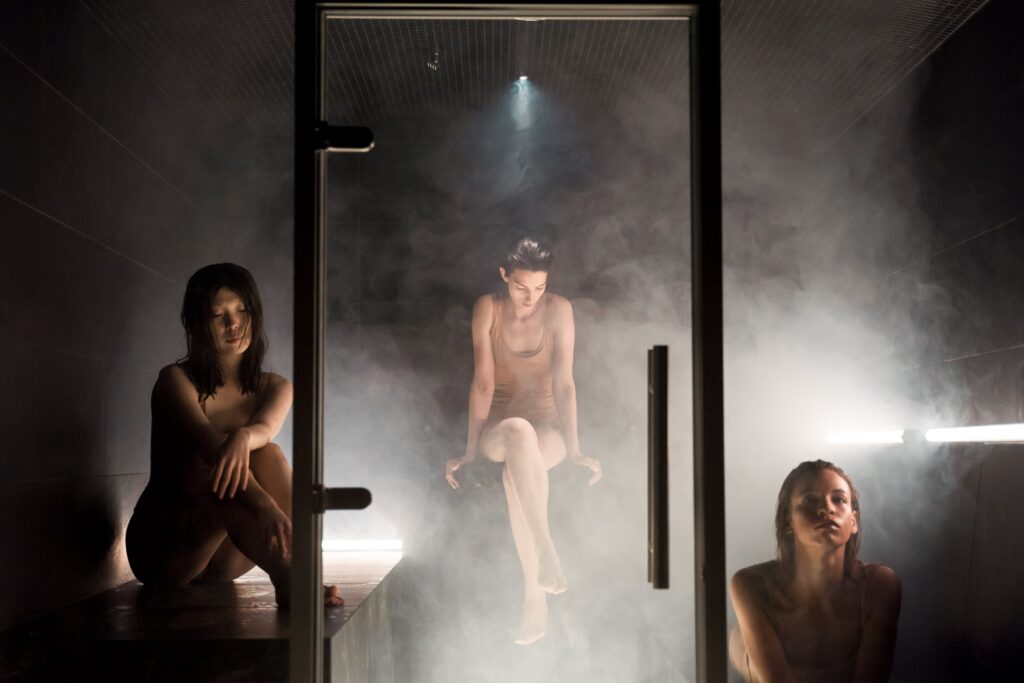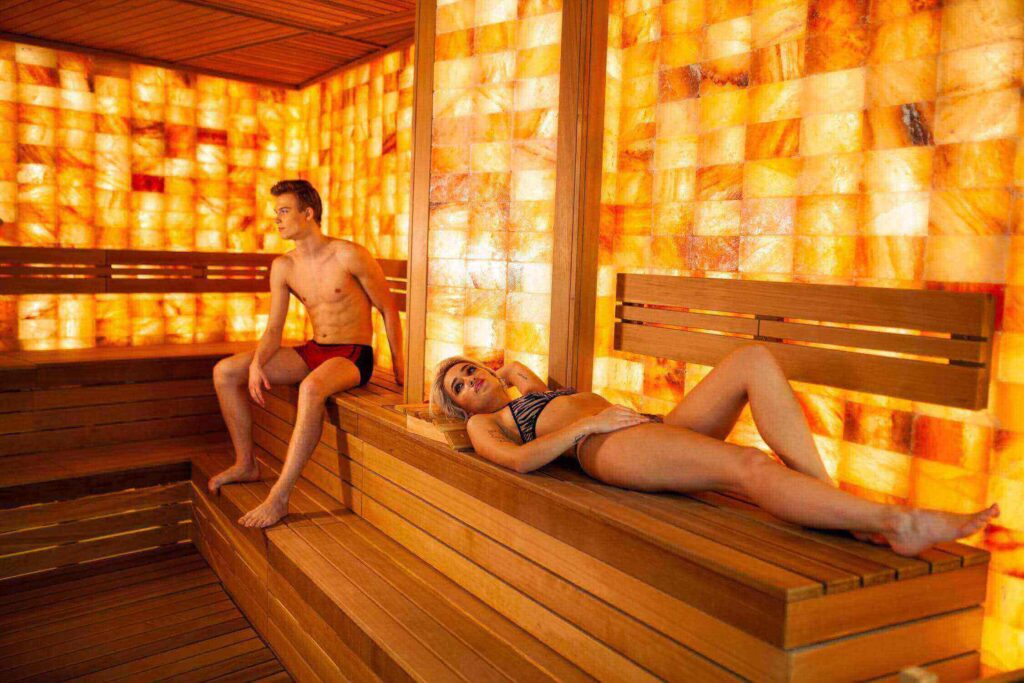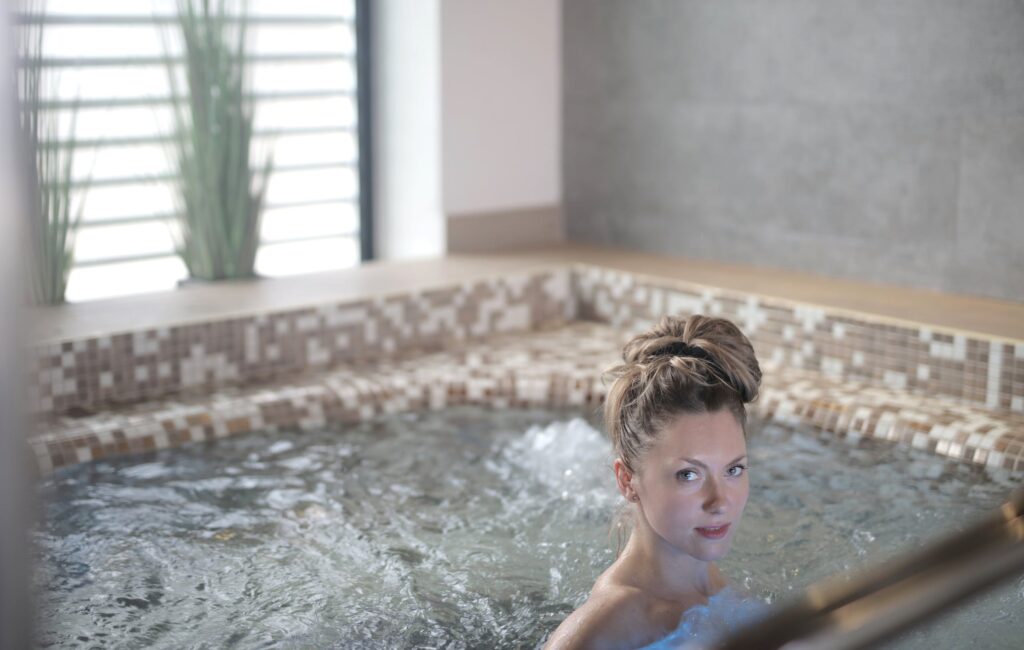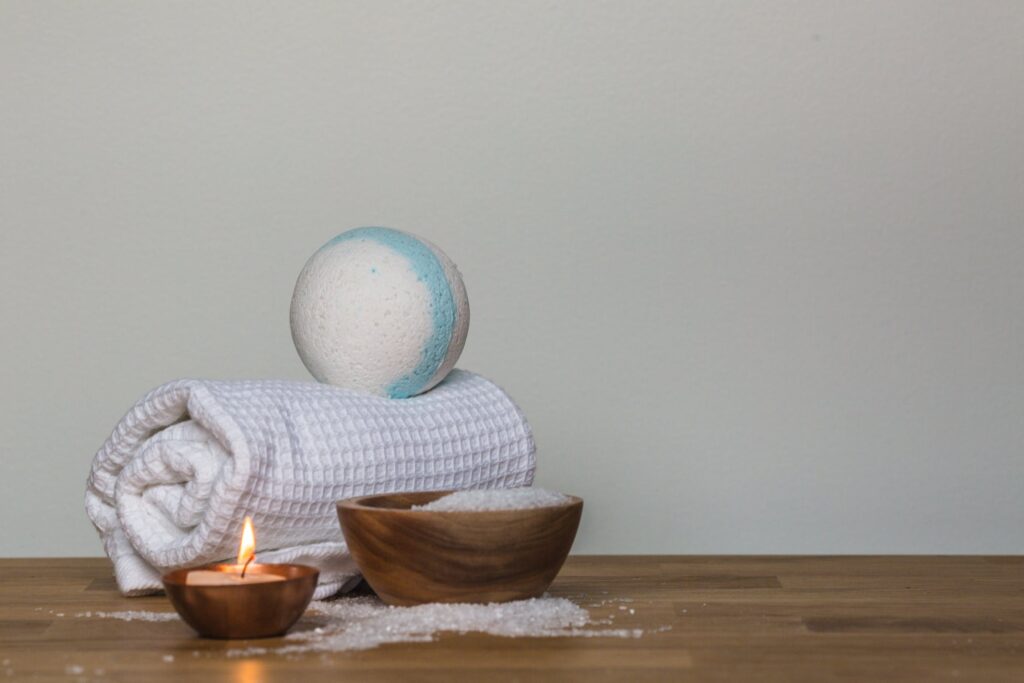Saunas have a long history in Finland, dating back over 2,000 years. In 1112 A.D., a sauna was described in writing. The Finns eventually moved on to building their saunas in the open air. It was heated by placing rocks in a chamber with a tiny air vent for the smoke to escape. More than three thousand years ago, the Mayans used sweat rooms for the same purposes—to create a state of spiritual and physical harmony. Several cultures from all over the world have traditionally used saunas for rest and recreation, treatment and rehabilitation, health improvement, and rituals and ceremonies.
A sauna is a room heated to a comfortable temperature, typically around 130 degrees Celsius (or 150 degrees Fahrenheit). There are four main varieties of saunas: the traditional Finnish sauna, the dry sauna, the steam bath (sometimes called a Turkish bath), and the infrared sauna. There are many different types of saunas, and each one has its own special atmosphere and atmosphere-altering effects.
There is a big difference in how you feel afterwards depending on the kind of sauna you went to. You can have a sauna in a huge selection of styles. Take a look at the most well-liked saunas and do some comparison shopping to see what makes each one unique.
FAQs About Sauna
While some experienced sauna users, especially in Finland, may turn the sauna into a longer social event, don't overdo it. The longer you stay in the sauna, the more you risk dehydration, so a general rule is to cap your time to 15 to 20 minutes.
We can't stress this enough! When you sweat in the sauna, your body can lose up to a pint of fluid, so it's important to make sure you're making up for lost water and electrolytes.
Rinse off any sweat or dirt so you enter the sauna fresh, everyone in there with you will appreciate it. Stay aware of your space. Public saunas can get crowded, so be courteous and be wary of how much space you're taking up. If someone new joins the sauna, make room for them so everyone can sit comfortably. Be quick.
Simply sitting in a sauna can enable you to decrease excess fat is not a reality. A sauna does not allow you to lose weight; it temporarily eliminates quickly replaceable water from the body. In addition, excessive heat makes your body sweat and sweating can make you lose fluid in the form of water.
You should take a hot shower or warm water and wash with soap before entering the sauna. This is not just a rule of hygiene but prepares the skin with open pores and relaxes the muscles throughout the body. Very important is to dry well before entering the sauna, otherwise it harder to sweat.
Wood Burning Sauna - Traditional Finnish Sauna
The traditional type of Finnish sauna is one that burns wood as its fuel. Burning the wood in the stove provides heat for the sauna, which is done wood. The required temperature can be attained by adjusting the amount of fire that is burning in the stove. When measured at the location where a person is seated, the ideal temperature for a typical Finnish sauna is not less than 65.5 degrees Celsius. The humidity in the sauna can be controlled by pouring some water on the rocks that have been heated.
The sensation of taking a sauna in a wood-burning sauna is one that is uncomplicated and grounded in nature. In this type of sauna, wood is burned to provide heat for the sauna rocks and the actual sauna area. The vast majority of the stoves that are utilized in these are continuous-heating stoves, which means that the wood is burned within the stove while the individual is taking their sauna bath. Although wood-burning saunas are capable of reaching relatively high temperatures, the user can, if they so choose, generate the ideal temperature for themselves by adjusting the rate at which the wood burns in the stove. Stoves that burn wood are available on the market, and modern stoves are known for their high levels of efficiency and low maintenance requirements.
Because saunas have been around for a significantly longer period of time than electricity, the traditional source of heat was the open flame. The rocks are warmed by the fire, which in turn warms the space. Simply add some water, and you'll have a finished product in no time.
I suppose you could argue that there are two primary categories of saunas that burn wood, but in practice, they both serve the same purpose. They are presented here.
You can utilize more modern units that will power and heat a sauna like the one that is seen above, even if you prefer the source of heat that is derived from burning wood. Because it is wood-burning, there is no need to worry about causing a short circuit if you pour water on the pebbles that are in the unit.
This particular sauna has walls made of wood and is what most people think of when they hear the term "traditional sauna." The sauna will provide you with heated rocks, a pail of water, and a ladle for use throughout your session. The humidity in the sauna can be adjusted by adding water to the rocks, which can be done by anyone who uses the sauna. The moisture and steam in the sauna could increase from 20% to 40% as a result of this adjustment. The humidity levels within the sauna dropped precipitously as the temperature rose higher.
A dry sauna is comparable to a traditional Finnish sauna in that it contains heated rocks; however, there is no water to be ladled onto the rocks in a dry sauna. This particular variety of sauna features a lower relative humidity and can be found in fitness centers. It is possible to add water to the heated rocks in a dry sauna, although not everyone is aware of this practice. If you are using a public sauna, you should always be respectful to the other people using the sauna and observe any rules that are in place.
Steam Room with Electric Dry Heater
Saunas that use electricity to heat up have been available to Finns since the 1950s, and ever since then, the vast majority of the population has taken advantage of this convenience. This style of sauna is not only efficient, but also safe, stylish, and user-friendly. Most electric heaters are equipped with remote controls for easy use, and they can be installed either on the floor or on the wall. Sauna heaters can be purchased to suit a wide range of sauna sizes.
Commonplace now are saunas that use electricity to heat the air. These sauna heaters are more convenient to operate than their wood-burning counterparts because you don't have to constantly tend to it. Once you've completed wiring everything in, all you'll need to do to heat your sauna room to the proper temperature is push a button. There are also several benefits associated with using saunas.
Most people consider the fact that electrically heated saunas allow for more precise temperature regulation to be the greatest benefit they provide. Maintaining a comfortable temperature in a sauna heated with wood can be more of a challenge. If you opt for electrical heating, you'll be able to manually set the desired temperature by pushing a series of buttons. You'll be able to pinpoint your targets with pinpoint precision. The majority of these systems also feature a remote control, saving you the trouble of getting up every time you want to adjust the temperature. Using this function will help you save both time and effort.
Since that the saunas are heated electrically, they also have a very high efficiency rating. Your monthly power bill won't skyrocket because of them because they are produced in compliance with strict energy rules. In general, the more advanced the technology behind your electrothermal sauna, the better it will be in terms of energy efficiency. So, deciding to buy one of these saunas is a lot less of a challenge.
Several spas offer electrically heated saunas for its clients, despite the fact that they are not used nearly as often as steam rooms. These saunas are very popular because of their great reputation for helping people relax quickly. This sort of sauna has a few advantages over others if you're looking for the easiest sauna experience imaginable. Check out this page for additional sauna-related information. Since infrared saunas and electrically heated saunas are so simple to set up, they are the two simplest solutions.
Common Steam Baths
Public baths in ancient Rome were heated by underground hot springs, and were open to the general populace regardless of wealth or status.
As the Romans spread their culture, they brought their love of bathing establishments with them. As a result, nearly every Roman settlement had its own public bath. As an added bonus, these buildings served an essential purpose for the forts.
In most public baths, there were three main rooms:
- Of the three, the Caldarium was the warmest.
- Akin to a hot tub in feel, the Tepidarium was a relaxing place to soak.
- Like a sauna, but much colder, the Frigidarium was a popular place to relax.
The Caldarium was built into the side of the furnace, or hypocaust, and its walls were made to be hollow so that the hot air rising from the furnace could heat the bath.
Sweat baths are commonplace in many cultures around the world. According to the Finns, the sauna and steam bath represent their own unique approach to personal hygiene.
Even among Native Americans, the practise caught on, and around the same time sweat lodges began appearing. The rites were performed in the hope that one could achieve a state of mental and physical cleanliness.
The modern steam sauna uses lower temperatures and higher humidity to produce wet heat than older styles of saunas. They're usually made from of tile or plastic, and they get their heat from a device called a steam generator. The generator causes the water to boil, producing steam that is released into the atmosphere.
In order for condensation to form on the walls and floor of a steam chamber, it must be sealed off from the rest of the room. The high humidity in a steam room prevents your sweat from evaporating, making you feel substantially hotter than you actually are. But, the greater your perspiration, the more beneficial it is to your health.
Wet Steam Room (Just Add Water)
There are several key differences between a dry heat sauna and a wet sauna, but in general, they are the same. More formally, this term refers to a sauna in which water can be poured directly onto the heating element. Steam is created when water is exposed to the high temperatures of the rocks, creating a steamy and warm atmosphere. This style of sauna has been shown to increase perspiration. The model you describe is my favourite sauna.
You should know that a steam room is not the same as a wet sauna. A steam room is a room with its own steam generator that fills with steam. A wet sauna makes use of a heating element that produces hot, moist air by splashing water on the heat source. The result is reminiscent of a visit to a genuine Finnish sauna.
However, most commercial saunas do not allow water to be splashed on the rocks since they are heated by an electric heater. Using water nearly always leads in damage to the element, especially when some people lose their minds and dump a full bucket of water on it at once. We wouldn't have any problems if everyone used only a modest amount of water at a time, but alas, that's not how it actually works.
Heavy perspiration is virtually guaranteed when you're in this hot and humid environment. Extreme sweating is to be expected in these settings, as temperatures can soar to a scorching 212 degrees Fahrenheit at times. Your body will sweat as an attempt to reduce its core temperature, and the more effort it puts forth in this direction, the faster your heart will beat. Sweating is a physiological indicator of fitness and performance. Hence, you can reap some of the benefits of strenuous exercise with little effort beyond sitting there.
It's also worth noting that not everyone considers steam or wet saunas to be the same as a typical dry sauna. The steam produces a different kind of heat than the others do since it is moist and humid. The same effects can be achieved with a dry heat generated by other types of saunas, but these saunas will feel very different from the typical sauna. The popularity of steam saunas might probably be attributed to its primary function.
Hot Tub With Infrared Rays
'Heat therapy chamber' could be a better description than 'traditional Finnish sauna' because this is not a traditional Finnish sauna. Infrared heat therapy rooms use radiant heat, in which the devices or emitters in the room reflect heat directly onto the body of the individual being treated, as opposed to heating the air or the stones. When it comes to infrared saunas, no water nor steam are used because they are unnecessary. Infrared rooms are best used to either warm up muscles before activity or to soothe sore muscles afterwards. A lot of the same manufacturers who provide home saunas also provide traditional Finnish saunas and steam rooms. A few of these vendors also provide infrared inclosures.
Some other examples of sweat baths include the Roman balneae and thermae, the Turkish hammam, the sweat lodges of the North American indigenous, the temescal of Mexico and Guatemala, the Japanese hot water baths sentoo and o-furo, and the Russian banya.
Infrared saunas differ significantly from conventional saunas in that they contain almost no moisture. A person using this sauna will feel as though they are being wrapped in a heat blanket or heated gloves, both of which contribute to a general increase in body temperature.
Sun Plumbing is the firm to call if you live in the Melbourne, Florida region and are thinking about installing a sauna in your home. You should have all the details ironed out before moving through with the installation, especially if you are a new homeowner, but a sauna could be a great addition to your home.
The infrared sauna at my gym is one of my favourite amenities there. Nearly every time I want to relax in a sauna, I end up in the community centre closest to my house because of the fantastic electric-powered dry heat sauna they have there (and they keep it hot).
Not being able to feel the extreme heat that you do in a typical sauna is one of the main reasons why I don't care for infrared saunas. While perspiring in an infrared sauna is possible, my perspiration during this experience was noticeably different from that of a traditional hot sauna.
Nonetheless, infrared saunas have been increasingly popular over the past few years. Some folks may not even know there are various sauna options. The interesting thing about these sauna rooms is that they don't even try to heat the room itself; instead, they use a new approach to warm you up. Concentrated infrared light heats your body in a way that is physiologically similar to being in a steam sauna. Although infrared light cannot be seen by the human eye, it can easily pass through most biological tissues.
It's worth noting that an infrared sauna won't come close to reaching the high temperatures achieved by traditional saunas. Although you will be the direct target of the heat, you will still reap the benefits. This type of sauna may or may not be as calming as others, depending on the individual, but there's no denying that the atmosphere and atmosphere are significantly different. You'll still sweat enough to make it worthwhile, and you can take advantage of this to maximise the sauna's beneficial effects.
A lot of people don't like their sauna sessions as much in an infrared sauna as they do in a traditional sauna. The surroundings has obviously altered, and the feeling one gets from being there is different now. But, just because purists will almost always prefer the other treatments by a hair means that infrared saunas don't have their own devoted fanbase. Because of their low cost, infrared home saunas have become increasingly popular.
The fact that these infrared sauna chambers may be taken anywhere without breaking the bank is a major selling point. A traditional steam sauna may not be as cost-effective as you had thought, even if you have always wanted one in your own home. There is no doubt that there is a need for saunas of this type in a world when everything appears to come down to money. One of the alternate options may be more to your liking if you want to be able to carry on a conversation while in the sauna.
Differences Between a Wet and Dry Traditional Sauna
There is little practical difference between a dry sauna and a wet sauna. A sauna can be used either wet or dry. Water is poured over the hot stones that make up your sauna's heater, creating what is known as a "wet" sauna. If water cannot be poured over hot stones in a sauna, it is not a true sauna. Humidity in a sauna is controlled by the amount of water consumed by its users. In addition to its relaxing effects, water is essential for proper perspiration and pore cleansing. While the majority of people do use water in their saunas, there are some who prefer to take advantage of the dry heat without adding any moisture. A sauna functions best with relative humidity at between 10% and 15%. A sauna's user can tailor the experience to his or her specific needs by adjusting the heat and moisture levels to their liking.
People often confuse wet saunas with infrared saunas, but the two are quite different. A sauna is "a bath that uses dry heat to promote perspiration and in which steam is formed by pouring water over heated stones," as defined by the Oxford English Dictionary. According to the dictionary definition of the word, an infrared "sauna" is actually a therapeutic chamber. There is no need for water, and the process does not generate steam or reach very high temperatures.
Wet saunas are wooden structures that can reach temperatures of around 190 degrees Fahrenheit thanks to a single heater, usually an electric one. Due to the high temperature, the air is extremely dry and the humidity level is very low. Because softwood does not burn and the air is dry, you may be comfortable despite the high temperature. Wet saunas get its name from the explosion of steam that is released whenever water is sprinkled over the pebbles that are contained within the heating unit, hence the name. A burst of superheated air is released alongside the steam, making the surrounding area feel much hotter than usual for a short period of time.
The Smoke Sauna – One Of The Original Types Of Saunas
A smoke sauna, also known as a "Savu Sauna" in Finnish, is a more uncommon type of sauna that consists of a large wood-burning stove but does not have a chimney. Before the bathers are allowed to use the sauna, it must first be heated for several hours using a "warmer" that is comprised of a significant quantity of rocks (several hundreds of pounds worth of rocks). The flames and smoke produced by the combusting wood immediately heat the rock mass, and smoke is drawn into the sauna area from the spaces between the rocks. After the heating process has been finished, a phase has been finished, the flame has been extinguished, the space has been aired, and the sauna is now prepared for usage. A quality smoke sauna will provide an experience that is highly genuine and unadulterated, but as was mentioned earlier, the process is time intensive and calls for particular conditions to be met. It is not possible to purchase a smoke sauna kit anywhere in the United States.
One of the earliest types of saunas is the smoke sauna, and the practices and purposes that surround them can be discovered in a wide variety of countries all over the world. Some of them date all the way back to the 13th century, although they didn't start becoming common until the 17th century.
Cave saunas are said to be the oldest type of sauna. These saunas were built partially or totally under the earth and had ceilings that were composed primarily of soil.
Throughout the course of history, the majority of smoke saunas have been located in Estonia and the region that surrounds that country. These saunas were comprised of little more than a single room that was constructed out of cross timber and stood on cornerstones. They did not use any cement and instead had a floor made of earth, which was heated by a stove made of cobblestones.
By the nineteenth century, modifications had been made, including the construction of saunas that were split into two sections, each with its own entrance and sweat room, and that included plank flooring. Alterations were also made to the roof. They were now protected from the smoke by shavings rather than reeds, and a hole had been cut in the roof to allow for air circulation.
The construction of the stoves shifted to include clay and bricks that had been previously burned. As a result of the construction of the stoves with closed tops, the smoke was able to be directed to the chimney and then out through the roof; as a result, the saunas were free of smoke.
The construction of several types of saunas with chimneys thereafter began to proliferate, and in some regions, this design eventually became the most well-liked option. The number of saunas that featured a chimney quickly surpassed the number of those that lacked a chimney.
Some of the more experienced smokers who had used the smoke sauna felt that the models that included chimneys were not as good as the ones that did not. They noticed variations such as the floor being cooler, the sauna not getting as warm, and the room becoming moist when creating steam. In some regions, people believe that the smoke sauna is the only "proper" type of sauna.
Traditional Sauna VS Infrared
Infrared saunas are similar to traditional saunas in that they are rooms made of softwood, but with an infrared sauna, the person is surrounded by 4-7 electric heating panels. In most cases, the temperature will not get higher than 135 degrees Fahrenheit, and there will be no need for water. In its place, the user will position themselves in front of one or more of the heating panels so that the heat can be concentrated on a particular location or area of the body. At the site of contact, the infrared heat is able to go deeper into the body.
Your personal preferences and the functions you want your sauna to fulfill should guide your decision about the model of the sauna to purchase. Both varieties of sauna have relatively low running expenses to maintain. As a result of the little amount of power that is required to run sauna heaters and the fact that they are not on continuously, the total cost is insignificant. When utilizing the sauna three or four times a week for thirty to forty-five minutes at a time, the majority of customers report that their power bills are affected very little, if at all.
There are many different kinds of saunas available on the market today, and while they all provide the same wonderful advantages to one's health, there are also many differences between them.
One distinction is the difference in size. Saunas at home can be constructed in an additional room, or they can be placed outside where they can accommodate more than one person. Portable saunas, on the other hand, take up a very small amount of space and typically only have room for one person at a time.
Which Came First: Steam, Smoke, or Infrared? It is up to you to decide. There are still many individuals who opt for the more classic steam sauna, and there are numerous fantastic models that can be purchased on the market today.
The far infrared sauna is the type of sauna that has been increasingly popular over the past few years and has found its way into millions of homes. These saunas have a reasonable price point, are portable, are simple to install, and consume an extremely little amount of energy.
Therefore, if you are thinking about buying a sauna for your health, you may relax knowing that the benefits you receive from using a sauna, regardless of whatever sauna you choose, will be the same. The only thing left for you to do is select the kind of sauna that will best suit your needs.
Conclusion
Saunas have a long history in Finland, with four main varieties: the traditional Finnish sauna, dry sauna, steam bath, and infrared sauna. Wood-burning saunas are uncomplicated and grounded in nature, and can be adjusted by adding water to the rocks. Modern stoves are known for their efficiency and low maintenance requirements. Saunas that use electricity to heat up have been available to Finns since the 1950s, and are not only efficient, but also safe, stylish, and user-friendly. Electrically heated saunas have a high efficiency rating and are easy to set up, making them popular due to their reputation for helping people relax quickly.
Steam saunas use lower temperatures and higher humidity to produce wet heat, which can be increased by splashing water on the heating element to create a steamy and warm atmosphere. Heat therapy chambers use radiant heat, which reflects heat directly onto the body, and are best used to warm up muscles before activity or soothe sore muscles afterwards. Sun Plumbing is the firm to call if you are considering installing a sauna in your home. Infrared saunas use concentrated infrared light to warm the body, but they won't reach the high temperatures of traditional saunas. Infrared home saunas are becoming increasingly popular due to their low cost and ability to be taken anywhere without breaking the bank, making them a cost-effective alternative to traditional steam saunas.
A sauna is a bath that uses dry heat to promote perspiration and steam is formed by pouring water over heated stones. Smoke saunas are a more uncommon type of sauna that consists of a large wood-burning stove. Smoke saunas are the oldest type of sauna, built partially or totally under the earth and heated by a stove made of cobblestones. Infrared saunas are similar to traditional saunas, but with 4-7 electric heating panels surrounded by 4-7 heating panels, allowing infrared heat to penetrate deeper into the body. Saunas at home can be constructed in an additional room or placed outside, with steam, smoke, or infrared options available.
Content Summary
- Saunas have a long history in Finland, dating back over 2,000 years.
- Several cultures from all over the world have traditionally used saunas for rest and recreation, treatment and rehabilitation, health improvement, and rituals and ceremonies.
- A sauna is a room heated to a comfortable temperature, typically around 130 degrees Celsius (or 150 degrees Fahrenheit).
- There is a big difference in how you feel afterwards depending on the kind of sauna you went to.
- You can have a sauna in a huge selection of styles.
- Wood Burning Sauna - Traditional Finnish SaunaThe traditional type of Finnish sauna is one that burns wood as its fuel.
- Burning the wood in the stove provides heat for the sauna, which is done wood.
- The sensation of taking a sauna in a wood-burning sauna is one that is uncomplicated and grounded in nature.
- In this type of sauna, wood is burned to provide heat for the sauna rocks and the actual sauna area.
- You can utilize more modern units that will power and heat a sauna like the one that is seen above, even if you prefer the source of heat that is derived from burning wood.
- A dry sauna is comparable to a traditional Finnish sauna in that it contains heated rocks; however, there is no water to be ladled onto the rocks in a dry sauna.
- It is possible to add water to the heated rocks in a dry sauna, although not everyone is aware of this practice.
- Once you've completed wiring everything in, all you'll need to do to heat your sauna room to the proper temperature is push a button.
- Since infrared saunas and electrically heated saunas are so simple to set up, they are the two simplest solutions.
- Sweat baths are commonplace in many cultures around the world.
- The modern steam sauna uses lower temperatures and higher humidity to produce wet heat than older styles of saunas.
- Wet Steam Room (Just Add Water)There are several key differences between a dry heat sauna and a wet sauna, but in general, they are the same.
- This style of sauna has been shown to increase perspiration.
- You should know that a steam room is not the same as a wet sauna.
- A steam room is a room with its own steam generator that fills with steam.
- Heavy perspiration is virtually guaranteed when you're in this hot and humid environment.
- It's also worth noting that not everyone considers steam or wet saunas to be the same as a typical dry sauna.
- A lot of the same manufacturers who provide home saunas also provide traditional Finnish saunas and steam rooms.
- Sun Plumbing is the firm to call if you live in the Melbourne, Florida region and are thinking about installing a sauna in your home.
- The infrared sauna at my gym is one of my favourite amenities there.
- Concentrated infrared light heats your body in a way that is physiologically similar to being in a steam sauna.
- Although you will be the direct target of the heat, you will still reap the benefits.
- A lot of people don't like their sauna sessions as much in an infrared sauna as they do in a traditional sauna.
- Because of their low cost, infrared home saunas have become increasingly popular.
- A traditional steam sauna may not be as cost-effective as you had thought, even if you have always wanted one in your own home.
- One of the alternate options may be more to your liking if you want to be able to carry on a conversation while in the sauna.
- Differences Between a Wet and Dry Traditional SaunaThere is little practical difference between a dry sauna and a wet sauna.
- A sauna can be used either wet or dry.
- Humidity in a sauna is controlled by the amount of water consumed by its users.
- People often confuse wet saunas with infrared saunas, but the two are quite different.
- The Smoke Sauna – One Of The Original Types Of SaunasA smoke sauna, also known as a "Savu Sauna" in Finnish, is a more uncommon type of sauna that consists of a large wood-burning stove but does not have a chimney.
- It is not possible to purchase a smoke sauna kit anywhere in the United States.
- One of the earliest types of saunas is the smoke sauna, and the practices and purposes that surround them can be discovered in a wide variety of countries all over the world.
- Cave saunas are said to be the oldest type of sauna.
- Infrared saunas are similar to traditional saunas in that they are rooms made of softwood, but with an infrared sauna, the person is surrounded by 4-7 electric heating panels.
- Your personal preferences and the functions you want your sauna to fulfill should guide your decision about the model of the sauna to purchase.
- Both varieties of sauna have relatively low running expenses to maintain.
- One distinction is the difference in size.
- Portable saunas, on the other hand, take up a very small amount of space and typically only have room for one person at a time.
- Therefore, if you are thinking about buying a sauna for your health, you may relax knowing that the benefits you receive from using a sauna, regardless of whatever sauna you choose, will be the same.
- The only thing left for you to do is select the kind of sauna that will best suit your needs.

